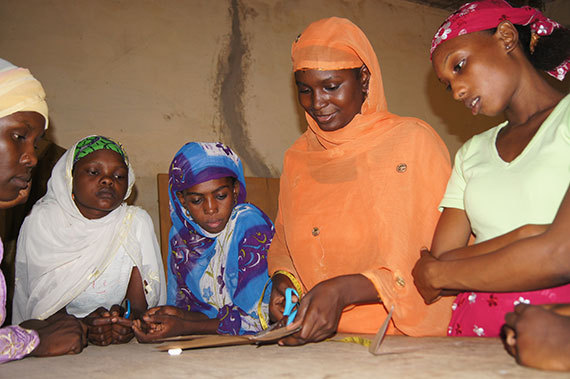Let me paint a picture. It's 2030. Girls are in school and on career paths. Comprehensive sexuality education is a part of the school curriculum for both girls and boys, who have a good understanding of their bodies and respect each other. Girls and women can choose if, when, and whom they will marry. They can access reproductive health services like contraception and abortion no matter where they live. They live free of violence.
It may sound idealistic, but the world could be a lot closer to this vision if the "Post-2015 Agenda" is fully funded and implemented.
Next week, heads of state, government ministers, and civil society and business leaders from around the world will meet at the Financing for Development Conference in Addis Ababa, Ethiopia, to hammer out how the new global development agenda will be funded. This is a pivotal moment; in September the Sustainable Development Goals (SDGs) -- a blueprint of global development for the next 15 years -- will be adopted. The SDGs are the new goalposts, and the Financing for Development discussions will set the playing field.
With 17 proposed goals and 169 targets, the SDGs are the strongest global consensus on recognizing women's rights and addressing the root causes of gender inequality and poverty. Through extensive negotiations, governments have committed to achieving universal access to sexual and reproductive health care and respecting reproductive rights; eliminating child, early, and forced marriage and all forms of violence against women and girls; ending the epidemics of AIDS, tuberculosis, malaria, and other infectious diseases; and eliminating gender disparities in education and vocational training.
The SDGs represent major milestones for women and girls, but they will mean little without money behind them. We have seen how a lack of leadership and resources can hinder progress. Take the Millennium Development Goals adopted by heads of state in 2000. In every region of the world, while progress was made, governments missed the mark on the commitments they made 15 years ago. In the final progress report issued this week, UN Secretary-General Ban Ki-moon sadly highlighted the fact that the most neglected goals and targets were those focused on women and girls.
We cannot let that happen again.
In order to ensure that the global community can achieve the SDGs, the Addis conference will need to tackle head-on some of the critical economic and financial barriers to development. As it currently stands, the draft agreement falls short. For example, it gives a preferential role to the private sector in driving development, without also ensuring compliance with regulations to secure the well-being of people and the planet over profits. It promotes trade policies that encourage privatization of essential public services, like health care and water, thereby reducing access for women and the poor. It proposes to tax informal workers, the vast majority of whom are women, without ensuring that transnational corporations pay their fair share. And it fails to recognize and address the harmful impact that the policies of the IMF and World Bank have had on countries' abilities to meet their peoples' basic needs. Governments would do well to reconsider strategies that have not worked in the past and are unlikely to work in the future.
Further, instead of dedicating specific resources for gender equality through "gender-sensitive budgeting," the draft ignores the way that national and global economic policies impact women and men differently. Yet we know that women are twice as likely as men to be engaged in unpaid care work, are less likely to benefit from social protection policies, pay an outsize proportion of their incomes in taxes, and suffer disproportionately from financial and other economic crises. Governments need to take those factors into account and rectify the inequalities that continue to hold women back.
Investing in women and girls is not only the right thing to do but the key to solving global poverty. In a 2014 study by the Copenhagen Consensus Center, a group of prominent economists released guidance on which of the draft SDG targets are the best investments; those aimed at achieving gender equality were among the highest rated. Despite this, many governments still do not see the need to allocate or increase resources for efforts that would strengthen health systems to reduce maternal mortality, address violence against women, ensure access to sexual and reproductive health care, and end child marriage. In fact, these areas should be priorities if we are to achieve sustainable development for generations to come.
The SDGs offer a historic opportunity to bring about transformative change for women and girls. We can achieve the world we want by 2030, but it will require real leadership, real commitment, and real funding. We hope and expect that our governments will step up to the challenge in Addis Ababa.
